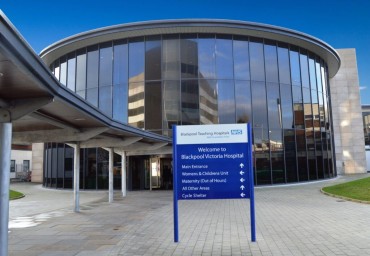What is an electromagnetic navigational bronchoscopy (ENB)?
An electromagnetic navigational bronchoscopy (ENB) is a medical
procedure that uses electromagnetic GPS-like technology to
examine your lungs. It is more accurate than a normal bronchoscopy
and can reach more areas of the lungs.
You may have been referred for an ENB if an area of abnormal tissue (nodule) was detected on a chest x-ray or CT scan. Most lung nodules are nothing to worry about, but some can be a sign of early lung cancer. This is why it is important to find out what the nodules are so we can decide on the right treatment for you.
We will not be able to give you your results on the day of the procedure, as it can take up to two weeks for biopsy results to be
available. Once we have the biopsy results, we will pass them to the doctor who referred you for the procedure. They will then contact you to let you know the next steps
The procedure will be performed under a general anaesthetic. This means you will be asleep for the procedure and will not feel
anything. An anaesthetist (a specialist doctor) will visit you before your procedure and ask you some questions about your medical history and your general health and lifestyle. This may be at your pre-assessment appointment or on the day of your procedure.
When you arrive for your procedure, we will admit you to our same day admissions unit (SDU) which is located on the first floor of the cardiac centre
Once you are asleep, we will gently guide a bronchoscope (a long, flexible tube with a bright light at the end of it) down your throat and into your lung. When in place we will use GPS technology to create a map of the inside of your lungs. This map will help us to carefully navigate the bronchoscope around your lungs. If we decide to take a biopsy of any nodules, we will insert biopsy tongs (forceps) through the bronchoscope into your lung.
After the procedure, we will move you to our recovery room where you will gradually wake up from the general anaesthetic.
A post procedure Chest X-Ray will also be performed We will then transfer you back to a cardiothoracic ward where we will
continue to monitor you.
Once reviewed by a member of the thoracic surgery team, most people can go home when they feel well and are able to pass urine and eat and drink without difficulty.
Advice after a general anaesthetic
For the first 48 hours after your procedure, you may feel more sleepy than usual and your judgement may be impaired
Potential side effects
After the procedure, it is common to experience some of the side
effects below:
• tiredness
• a sore throat (this should improve over a few days, and you can
take some over the counter pain relief medication to ease your
symptoms)
• a cough which brings up a small amount of blood (this should
stop after a few days)
• low blood pressure (this will usually improve after having
something to drink)
Please obtain medical advice immediately if you are worried
about the amount of blood you are coughing up or if you have
any of the following symptoms:
• increased shortness of breath
• vomiting (being sick)
• a high temperature (38°C or above)
In a medical emergency please do not hesitate to contact 999



